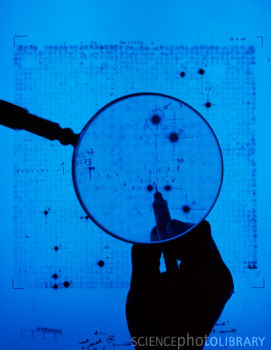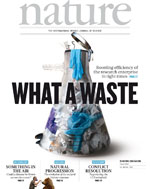导读:一个包括四名来自西蒙弗雷泽大学的国际团队取得了重大的发现,这将会改变最致命乳腺癌的治疗方式。Nature杂志在线发表题为“The clonal and mutational evolution spectrum of primary triple negative breast cancers”的论文,报告了该团队的研究结果。

该研究是对被认为是三阴性乳腺癌肿瘤的最大规模的遗传分析。这项研究的59位研究人员希望通过对100个肿瘤的基因组进行电脑映射,从而可以观察到相似的基因谱。
但是让他们惊讶的是,没有任两组的基因组是相似的,更别提是相同的。“在分子水平上观察这些肿瘤告诉我们,我们处理的不只是单个肿瘤,而是不同形态的乳腺癌的连续体,” 这篇论文的共同作者Steven Jones解释说。
Steven Jones是西蒙弗雷泽大学分子生物学和生物化学的教授,在卑诗癌症协会上通报生物信息学研究,他补充道:“尽管肿瘤在临床上很相似,这些肿瘤的基因多样性可能解释了它们为什么如此难治。”这些发现证实了个体化癌症药物治疗的重要性,它是以组成特定肿瘤的基因为靶标,而不是假定一种治疗方法可以治愈多样性、形态相似的肿瘤。
三阴性乳腺癌缺乏针对雌性激素、黄体酮和赫塞汀的细胞表面受体,这三种物质分别是与乳腺癌有关的荷尔蒙、类固醇和蛋白质 。三阴性乳腺癌攻击16%的乳腺癌患者,主要以40岁以下的为目标。
研究人员之所以认为三阴性乳腺癌是最致命的乳腺癌,是因为现代药物治疗对它不见疗效,现代药物治疗敲碎了在大多数乳腺癌中发现的受体,但是对三阴性乳腺癌却没有效果。一般来说,三阴性乳腺癌患者需要通过手术、化疗和放射来增加缓解的希望。
Jones相信随着基因测序的可承受性,现在测序只要几万而不是几百万,获得肿瘤分子水平的分析会越来越容易。

The clonal and mutational evolution spectrum of primary triple-negative breast cancers
Sohrab P. Shah, Andrew Roth, Rodrigo Goya, Arusha Oloumi, Gavin Ha, Yongjun Zhao, Gulisa Turashvili, Jiarui Ding, Kane Tse, Gholamreza Haffari, Ali Bashashati, Leah M. Prentice, Jaswinder Khattra, Angela Burleigh, Damian Yap, Virginie Bernard, Andrew McPherson, Karey Shumansky, Anamaria Crisan, Ryan Giuliany, Alireza Heravi-Moussavi, Jamie Rosner, Daniel Lai, Inanc Birol, Richard Varhol
Primary triple-negative breast cancers (TNBCs), a tumour type defined by lack of oestrogen receptor, progesterone receptor and ERBB2 gene amplification, represent approximately 16% of all breast cancers. Here we show in 104 TNBC cases that at the time of diagnosis these cancers exhibit a wide and continuous spectrum of genomic evolution, with some having only a handful of coding somatic aberrations in a few pathways, whereas others contain hundreds of coding somatic mutations. High-throughput RNA sequencing (RNA-seq) revealed that only approximately 36% of mutations are expressed. Using deep re-sequencing measurements of allelic abundance for 2,414 somatic mutations, we determine for the first time—to our knowledge—in an epithelial tumour subtype, the relative abundance of clonal frequencies among cases representative of the population. We show that TNBCs vary widely in their clonal frequencies at the time of diagnosis, with the basal subtype of TNBC showing more variation than non-basal TNBC. Although p53 (also known as TP53), PIK3CA and PTEN somatic mutations seem to be clonally dominant compared to other genes, in some tumours their clonal frequencies are incompatible with founder status. Mutations in cytoskeletal, cell shape and motility proteins occurred at lower clonal frequencies, suggesting that they occurred later during tumour progression. Taken together, our results show that understanding the biology and therapeutic responses of patients with TNBC will require the determination of individual tumour clonal genotypes.
文献链接:https://www.nature.com/nature/journal/vaop/ncurrent/full/nature10933.html








